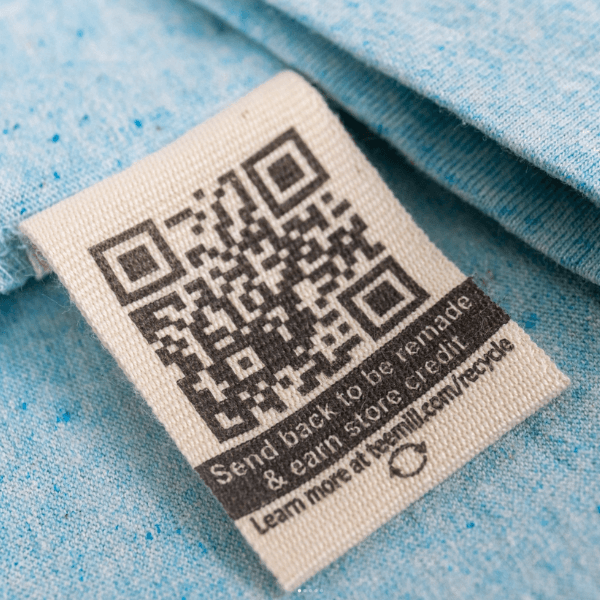
Earth Day (April 22) is peeking around the corner, but why wait to show our planet some love? It’s calling out to us for help right now! To start making a green difference at the beginning of this year, we’ve compiled the top 6 eco-friendly print-on-demand companies that focus on sustainability while delivering top-notch products.
Whether you’re just dipping your toes into the print-on-demand world or a seasoned seller with years of experience, it’s never too late to switch to an ecological POD alternative.
So, are you ready to go green with us? 🌟👩🌾💚
5 Benefits of Choosing an Eco-Friendly Print-On-Demand Site
First off, let’s acknowledge that print-on-demand, by itself, is already a more eco-friendly option compared to other business models. Print-on-demand products are made only when an order is placed, reducing excess production, overstock, and environmental waste. 🌟
Additionally, print-on-demand companies handle shipping directly to your customers. This process shortens the distribution chain, reducing carbon emissions and fuel usage.
But did you know that some companies go beyond the extra mile and are actively striving to make a real difference? Let’s see what other advantages choosing an eco-friendly print-on-demand partner offers:






🥤 1. Bye-Bye Plastic
While some of the best print-on-demand companies offer an ecological product line, sadly, some still use plastic. 😔 However, there are more companies out there that are reducing plastic usage by 90 to 100%! 🌟 This is possible because they use minimal or necessary quantities of eco-friendly alternatives like paper, wood, or cardboard.
🌍 2. Consumer Support for Environmental Causes
Nowadays, more and more consumers are embracing sustainable habits, especially when it comes to apparel. 🌟 They’re becoming increasingly aware that not all brands are doing enough to protect our planet, as reflected in a recent survey. This presents a golden opportunity for your business!
By prioritizing eco-friendly practices and products, you can attract conscientious consumers passionate about the environment.
🌟 3. Durability and Quality of Materials and Processes
While some eco-friendly products may come at a slightly higher cost, consumers are more than willing to invest if they positively impact the environment and offer higher quality. Using durable materials minimizes waste and ensures longevity.
But that’s not all! Some companies prioritize materials and inks that benefit the environment and the human body. The majority of eco-friendly print-on-demand companies use supplies that are free from pesticides, fertilizers, harmful chemicals, and animal by-products. Additionally, they utilize biodegradable and vegan ingredients, and their processes consume less water.
🌱 4. Conscious Use of Resources
Eco-friendly print-on-demand companies are champions of resource conservation! Some harness the power of renewable energy, while others implement innovative recycling practices to reduce their carbon footprint.
🪴 5. Green Initiatives
Sustainability isn’t just a checkbox—it’s a journey of constant evolution! 🌱 With this motto in mind, many eco-friendly print-on-demand companies continuously innovate to minimize waste and embrace more sustainable practices.
You’ll find that most of these companies actively engage in tree-planting campaigns, contributing to reforestation efforts and carbon sequestration. Additionally, misprinted items are often repurposed through recycling or donation programs, ensuring they never end up in landfills. Some companies even transform these items into eco-friendly carpets, reducing waste and environmental impact. 🌟
🤝 Extra: Ethical Suppliers
Truly committed eco-friendly companies prioritize partnerships with ethical suppliers who share their values. These suppliers prioritize eco-friendly practices, uphold social responsibility standards, and provide organic materials. Moreover, they ensure fair working conditions for their employees, fostering a culture of respect and dignity.
🌍🌳🌻 Need design ideas for launching a t-shirt collection? Then hop into 20+ Earth Day T-Shirt Ideas to Bring Your Store to Life
Top 6 Eco-Friendly Print-On-Demand Sites to Try This Year
After reviewing the main pros of hiring an eco-friendly print-on-demand service, let’s unveil who they are! Get ready to be amazed by what these green companies have to offer. 😊💚✨
🌱 1. Teemill
Teemill, founded in 2004 with love from England, is an incredible eco-friendly print-on-demand company on a mission to revolutionize the clothing industry and end waste by helping businesses, creators, and green companies make custom products in the most ecological way possible. But wait, there’s more! Let’s dive into all the fantastic things they do for our planet!
☁️ 1. Everything Is Organic
At Teemill, every product is crafted from organic-certified materials, ensuring a sustainable and eco-friendly approach. This commitment means they avoid using toxic pesticides or fertilizers, instead opting for natural methods like co-planting, insect traps, and even cow poo! This promotes healthier soil and ecosystems and produces an extra soft feel in their cotton clothing. 💚
Moreover, Teemill uses water-based inks for printing, which are far more environmentally friendly than traditional inks. These inks are free from toxic chemicals and offer long-lasting products, ensuring quality and sustainability.
🔄 2. Circular Economy Model
The clothing industry typically makes, uses, and sends products to landfills. However, through a circular economy, each item is designed to be returned and remade repeatedly. In other words, once a product serves its purpose, it can be sent back to be remanufactured into a new clothing piece using the same materials. Isn’t that amazing? It’s like giving each piece a second life and opportunity!
To facilitate this process, Teemill creates labels with instructions on caring for each product appropriately and includes a code to scan to return the item and receive credit in return.
☀️ 3. Renewable Energy Implementation
Teemill’s manufacturing process harnesses the power of solar energy, utilizing solar panels to generate clean and sustainable electricity. But that’s not all! Teemill owns two wind farms and an impressive 150 kW PV array in India, further bolstering its commitment to renewable energy.
Additionally, through smart processes and technology, Teemill’s equipment operates dynamically, turning on and off only when necessary. This means that machines aren’t running 24/7 but rather efficiently utilizing energy only when needed, minimizing waste and maximizing sustainability.
😉 4. Plastic-Free Packaging
At Teemill, every order is shipped in plastic-free packaging that you can customize to your liking! Teemill opts for environmentally friendly alternatives, such as a rip and splash-proof mailer bag made entirely out of paper. Plus, they use sturdy cardboard boxes sealed with paper-based tape for larger orders.
🌵 5. Tree Planting Campaigns
As part of their commitment to sustainability, Teemill proudly engages in a tree-planting campaign! 🌱
On their official website, Teemill highlights their remarkable achievement of planting 140,795 trees. To put this into perspective, that’s equivalent to covering 17,599 tennis courts and sequestering an impressive 5,434,687 kilograms of CO2!
Through their tree planting efforts, Teemill isn’t just making a difference in reforestation, but it’s also combating climate change, and preserving our planet’s ecosystems. 🙌
✨ 6. Eco-Friendly Certifications
Teemill is proud to hold various certifications demonstrating its commitment to quality, sustainability, and social responsibility throughout its supply chain. 🌱
Here are some of the certifications Teemill has achieved:
- GOTS (Global Organic Textile Standard)
- OEKO-TEX Standard 100 (Annex 4 & 6)
- OEKO-TEX DETOX TO ZERO Compliant
- SA8000 (Social Accountability International)
- Fairtrade FLOCERT
- WRAP Platinum (Worldwide Responsible Accredited Production)
- Nordic SWAN Eco-labelling
- GRS (Global Recycling Standard)
- IGBC Green Factory (Platinum)
- Modern Slavery Policy (Agreed in all supplier contracts)
These certifications ensure transparency in the supply chain, the use of renewable energy, the absence of chemical substances, and adherence to social accountability in the workplace. For more information about each certification, visit Teemill’s official website. 😊
✏️ Product Catalog
Teemill offers a total of 52 eco-friendly products across various categories:
Teemill’s apparel catalog includes t-shirts, hoodies, jumpers, kids’ and babies’ clothing, shorts, joggers, vests, and more.
Featuring art prints with wood frames and canvas wall art.
You can create custom tote bags, jigsaws, mugs, and stickers in the accessories category.
😊✏️ You might like: How to Make and Sell Stickers: Make It Stick Online!
🚚 Shipping
Teemill offers worldwide shipping to over 85 countries across different continents. You can check the complete list of countries here.
Orders are printed the same working day they are placed, with working days from Monday to Friday. However, shipping times may vary depending on when the product is ordered and other factors.
The shipping cost is determined by the destination and the speed of delivery you choose. Teemill provides various packaging options with different priority times and costs. For example:
Orders can be delivered to your customers within 1 to 6 days.
Delivery takes approximately 5 to 7 days.
Orders to international destinations, including the US, also have an estimated delivery time of 5 to 7 days.
🤑 Pricing
Teemill operates on a free pricing model. Similar to many other print-on-demand companies, you don’t need to acquire a subscription. Instead, you only pay when an order is placed. 😉
🚀 How Teemill Works
The process is relatively simple, consisting of just three easy steps:
You can create your designs using tools like Placeit by Envato or upload designs you’ve made yourself. Alternatively, you can choose from Teemill’s design library for inspiration.
Teemill offers a free online store builder, allowing you to customize your store exactly how you want it. If you already have an ecommerce store, you can easily connect it with Teemill. They offer popular integrations with platforms like Shopify, Etsy, Wix, EKM, Amazon, BigCommerce, WooCommerce, Squarespace, Ecwid, and more.
Once your products are designed and your store is set up, it’s time to start selling! Promote your products through your preferred channels, and Teemill will handle the rest. Teemill will create and ship the products directly to your customers, ensuring a seamless and hassle-free experience for you and your customers.
⭐ Rating
Teemill boasts a positive score on Trustpilot, with an impressive 4.6 stars out of 5 based on 2,585 reviews! 🌟
💚 2. TPOP
Next on our top 6 eco-friendly print-on-demand list is TPOP!
TPOP is a print-on-demand site known for its dedication to environmental sustainability. Let’s dive deeper into this French green company and explore what makes it stand out in the world of eco-friendly printing!
😊 1. Plastic-Free Packaging
TPOP sends all its items in plastic-free packaging, opting for high-quality recyclable cardboard. Moreover, the paper used for printing comes from sustainably managed forests, and the adhesive is derived from kraft paper, which reduces the environmental impact.
🌱 2. Clean Products
TPOP prioritizes clean products in terms of manufacturing processes and the conditions under which they are produced.
According to its official website, 33 products have received at least one eco-responsible label, demonstrating its commitment to sustainability and environmental stewardship.
In TPOP’s catalog, there are two types of ecological textiles:
100% Organic Cotton: While conventional cotton production requires much water to produce a single shirt and involves harmful chemicals, TPOP ensures the use of organic cotton in its production process. This organic cotton requires much less water and avoids using pesticides and other toxic substances, resulting in a more environmentally friendly product.
Recycled Textiles: TPOP also embraces the circular economy by reutilizing recycled textiles in its products. This means a single product can be remade repeatedly by reusing fibers from clothing offcuts (like recycled cotton) or by transforming non-renewable materials, such as plastic bottles, into recycled polyester.
✏️ 3. Environmentally Friendly Inks
The inks used in the TPOP production process are environmentally friendly, vegan, and gentle on people’s skin. TPOP exclusively uses water-based inks 100% eco-certified by OEKO-TEX® ECO PASSPORT and the highly respected GOTS 5.0 label.
🙌 4. Ecological Partners
TPOP works with partners who share their commitment to environmental sustainability and ethical labor practices. They only choose textile companies that adhere to an ecological approach and prioritize the environment’s well-being and human labor.
In addition, their partners hold certifications such as STANDARD 100 by OEKO-TEX®, ensuring that their products are free from harmful substances, and affiliations with organizations like the Fair Wear Foundation, promoting fair treatment and working conditions for employees. ✨😊🙌
✏️ Product Catalog
TPOP offers a wide range of eco-responsible products to meet all your print-on-demand needs. Here are the main categories available:
Explore TPOP’s selection of polos, boxers, hoodies, hoodies with pockets, sweatshirts, t-shirts, and tank tops.
The women’s catalog includes t-shirts, polos, hoodie dresses, t-shirt dresses, and crop tops.
For the little ones, there are sweatshirts, hoodies, bodysuits, bibs, and t-shirts.
TPOP’s accessories selection is reduced but involves aprons, pouches, and tote bags.
In the Home & Deco catalog, you can find stickers, posters, ceramic and metal mugs, and cushions.
🚚 Shipping
At TPOP, orders are dispatched within 48 hours, and they offer international shipping to reach any country you want.
🤑 Pricing
TPOP offers an entirely free platform for ecommerce and print-on-demand services. However, for those seeking a more customized plan, TPOP also provides two additional subscription options; you need to get in touch with them to know these plans.
🚀 How TPOP Works
To start using TPOP as your print-on-demand partner, follow these steps:
Get started by creating an account on the TPOP platform. It’s quick and easy to sign up!
Select the print-on-demand products you want to sell in your store.
Customize your chosen products by uploading your unique designs.
Simplify the process using either TPOP’s integrated ecommerce platform or connecting your existing store on Etsy, WooCommerce, Shopify, or other platforms. This ensures a seamless order fulfillment: whenever a purchase is made, TPOP receives the order instantly, handles production, and ships the products directly to your customer on your behalf. And that’s it!
⭐ Rating
This eco-friendly print-on-demand has an impressive Trustpilot score of 4.6 stars based on 320 reviews! 🌟
🌵 3. Inkthreadable
Taking the third spot on our list is Inkthreadable, a British company dedicated to environmental stewardship. With a focus on reducing its carbon footprint, Inkthreadable has elevated its processes to deliver high-quality products while championing green initiatives.
Let’s explore what makes them a must-try eco-friendly print-on-demand company!
🎽 1. Vegan and Eco-Friendly Inks
Inkthreadable prioritizes sustainability by utilizing Kornit DTG printers, allowing them to use vegan and eco-friendly inks.
These inks offer numerous benefits, including the absence of unregulated chemicals harmful to the body and the environment. Moreover, these inks have achieved an OEKO-TEX® approved certification, further validating their eco-conscious approach.
🥑 2. Organic Products
The Inkthreadable organic collection features items (like organic t-shirts) made from organic cotton or a blend of organic cotton and recycled materials. By prioritizing organic materials, Inkthreadable reduces water usage in production and ensures that all items are pesticide-free.
🌱 3. No Plastic in Packaging
Inkthreadable prioritizes eco-friendly packaging solutions by using sturdy paper bags and cardboard packaging instead of single-use plastic. This commitment has led to saving an impressive 8 tonnes (approximately 8.81848 tons) of plastic annually!
On top of that, the company is still working to find a suitable alternative to biodegradable bubble wrap to ensure products arrive in perfect condition. 😉
⭐ 4. Recycled Textiles
Inkthreadable ensures that all textile waste generated in their processes is recycled and repurposed, giving them a second life in products like carpet underlay. This sustainable practice effectively prevents textile waste from ending in landfills, contributing to a cleaner environment and a more circular economy.
🌳 5. Initiatives to Reduce Carbon Footprint
Inkthreadable has taken proactive steps to offset its carbon footprint and support renewable energy initiatives. Their tree planting initiative in England has resulted in the planting of 10,000 trees, equivalent to three years of climate action.
Additionally, Inkthreadable has financed solar power and wind farms in India, contributing to adopting renewable energies. These combined efforts have offset 853.05 tonnes of CO2e, equivalent to saving 655 long-haul flights and preserving 2,559 square meters of sea ice.
✏️Product Catalog
Inkthreadable offers a wide range of over 220 custom products, categorized into:
Explore a variety of clothing options, including t-shirts, hoodies, sweatshirts, socks, bottoms, hats, and caps. Plus, discover their 100% eco-friendly products across different apparel categories!
For the youngest of the house, there’s a collection of hoodies, sweatshirts, baby bodysuits, baby changers, baby cruisers, denim jackets, t-shirts, caps, and beanies.
In the Accessories and Homeware catalog, find mugs, aprons, art prints, tote bags, water bottles, bamboo portraits, shopping bags, enamel mugs, backpacks, Christmas sacks, travel mugs, beach towels, ceramic ornaments, packs of coasters, face masks, cushions, and tea towels.
🚚 Shipping
Inkthreadable offers worldwide shipping to various destinations, including the UK, EU, USA, Australia, Canada, and more.
- Delivery Time: 1 to 5 days
- Cost: £2.12 to £11.99
- Delivery Time: 2 to 21 days
- Cost: £5.82 to £23.89
- Delivery Time: 3 to 7 days
- Cost: £7.08 to £37.80
- Delivery Time: 5 to 21 days
- Cost: £7.92 to £37.80
- Delivery Time: 2 to 21 days
- Cost: £6.67 to £37.80
🤑 Pricing
Inkthreadable is completely free to use, with no upfront costs. You’ll only be charged for the product and printing costs from any orders placed through your website.
🚀 How Inkthreadable Works
The steps to start using this eco-friendly print-on-demand supplier are super easy to follow. Let’s look at them:
Get started by creating a free account with Inkthreadable.
Choose from various products you’d like to sell, from t-shirts to accessories.
Upload your design or use Inkthreadable’s editor to create custom designs tailored to your brand.
Set a price and quantity for your product, then tap “Create Product” to finalize.
Seamlessly integrate Inkthreadable with your online store. Connecting is easy and efficient with available integrations, including Shopify, WooCommerce, Etsy, TikTok, Big Cartel, Wix, and Squarespace.
⭐ Rating
Like the first two eco-friendly print-on-demand companies, Inkthreadable on Trustpilot also maintains an excellent rating of 4.6 stars! 🌟
🪴 4. Spreadshirt
Spreadshirt is a multinational German company with over a thousand employees and 22 years of experience in the market. The company operates a network of global brands and customizes more than 300 products for customers worldwide. But here’s what makes them extra special – they’re not just about business growth; they’re also in pro of sustainability!
Spreadshirt is on a mission to be an eco-friendly print-on-demand company, implementing sustainable practices to support our planet, their fantastic team, and the economy. Spreadshirt’s vision is striking the perfect balance between business success and positively impacting society and the environment. Let’s learn more about what makes them a genuinely eco-friendly print-on-demand partner!
🖨️ 1. A Sustainable Way of Printing
Spreadshirt is dedicated to sustainability every step of the way, even regarding its printing technology! As part of their commitment to the environment, they’ve opted for digital printers that use non-toxic, biodegradable inks for waterless printing.
Plus, they’ve gone the extra mile by using vegan inks, not only reducing water and energy consumption but also ensuring benefits for our skin and avoiding materials of animal origin.
🌳 2. Paper Reduction
Spreadshirt has removed paper from its administrative processes, saving the equivalent of 767 trees by eliminating 8 million sheets of paper per year.
👌 3. Top Quality Products
Spreadshirt is committed to delivering top-quality products to your customers on behalf of your brand. They go above and beyond to ensure that each item is just right, providing accurate measurements, care recommendations, and the utmost quality to minimize the chances of returns.
Spreadshirt understands that when something is well-made, it’s satisfying to use and more sustainable in the long run. That’s why they subject every product to rigorous testing, including durability and longevity tests through multiple print and wash cycles. And they don’t stop there – customer feedback is invaluable in their quest to maintain high-quality standards.
Now, while returns are a reality, Spreadshirt handles them gracefully – with only a 2% return rate! 📦✨ And get this – any returned items are donated to charity or recycled into insulation wool, ensuring they’re used and minimizing waste.
🌴4. Organic Product Line
Similar to other eco-friendly print-on-demand sites, Spreadshirt offers an organic alternative across various categories. These products aren’t just stylish – they’ve been proven to have a smaller environmental and social footprint than conventional ones, actively contributing to environmental protection.
🍏 5. Fair Working Conditions
Spreadshirt prioritizes sustainability and employee well-being in its operations. Here’s how:
- Renewable Energy: Spreadshirt powers part of its headquarters with solar energy, contributing to a cleaner and more sustainable energy source.
- Employee Benefits: Spreadshirt treats its employees to fresh, organic fruits and vegetables, promoting health and well-being in the workplace.
- Environmental Initiatives: Spreadshirt actively contributes returned goods to charity and minimizes waste by recycling them.
- Sustainability Council: Corporate decisions are carefully monitored by a dedicated sustainability council, ensuring that all actions align with Spreadshirt’s commitment to eco-balance.
🍃 6. Packaging With Biodegradable Materials
Spreadshirt is dedicated to reducing plastic usage in packaging, recognizing it as a challenge for eco-friendly print-on-demand companies. While some packages still contain a small amount of plastic, Spreadshirt has made significant efforts to minimize it. They achieve this by combining plastic with paper or cardboard boxes, ensuring that most packaging materials are biodegradable.
In Europe, 69% of the packaging materials are biodegradable; in North America, this number increases to 89%. Spreadshirt’s ultimate goal is to find even more environmentally friendly packaging solutions, further enhancing their commitment to sustainability.
✏️ Product Catalog
Spreadshirt offers a diverse range of print-on-demand products across three main categories:
Explore a wide array of clothing options for men, women, kids, babies, and unisex. From t-shirts, hoodies, sweatshirts, jackets, and tank tops to sportswear, sustainable clothing, loungewear, and more.
Spreadshirt has a variety of accessories, including hats, caps, socks, bags, bandanas, buttons, satin sashes, and more.
Finally, in this category, you can find stickers, aprons, mugs, water bottles, pillows, stuffed animals, blankets, and mouse pads, among others.
🚚 Shipping
Spreadshirt offers shipping to so many countries, and the shipping times and costs vary for each of them. But for the US, here are the types of shipping:
For most cities in the US, Standard Shipping typically takes around two days.
Customers who need their orders quickly can opt for Premium Shipping, which guarantees delivery within one day.
For the fastest delivery, Spreadshirt offers Express Shipping, with orders delivered on the same day they are placed. 🌟📦
🤑 Pricing
Spreadshirt offers a completely free platform for users, whether by selling on the Spreadshirt marketplace or opening their own t-shirt store. Plus, Spreadshirt handles printing, fulfillment, shipping, and customer service.
🪴🌻🌿 Let your inspiration bloom and celebrate nature every day with our gardening and landscaping templates!
🚀 How Spreadshirt Works
Spreadshirt offers two main ways to sell your designs: the Spreadshirt Marketplace and Spreadshop.
By selling on the Spreadshirt Marketplace, your designs are exposed to a large audience of over 100,000 potential customers. Spreadshirt handles marketing and advertising efforts to attract visitors to the platform. All you need to do is upload your designs, whether created with Placeit or on your own, and Spreadshirt will produce the products and ship them to customers. There are no initial costs for sellers; you collect your earnings from each sale.
If you prefer to have your own branded store, you can open a Spreadshop account. This allows you to customize your store to your liking, upload the products you want to sell, and personalize them with your designs. Spreadshirt handles the printing, fulfillment, Shipping, and customer service for orders placed through your Spreadshop. This option gives you more control over your brand and store customization while still benefiting from Spreadshirt’s services.
⭐ Rating
The sustainable print-on-demand company boasts an impressive rating on Trustpilot, with a stellar score of 4.2 stars out of 5 based on 13,747 reviews.
⭐😊Learn more about How to Create Custom Designs & Add Them to Your Shop on Spreadshirt and TeePublic!
🌳 5. TeePublic
TeePublic, proudly American and established in 2013, empowers independent artists worldwide. With TeePublic, artists can effortlessly sell diverse products without the hassle of production, fulfillment, or customer service. But what sets TeePublic apart is its commitment to social responsibility.
Let’s delve into why TeePublic is an excellent eco-friendly choice for your business!
👕 1. Responsible Sourcing of Garments
TeePublic prioritizes ethical partnerships and sustainability in every aspect of its operations. Their garments are meticulously sourced from suppliers who adhere to the 12 points of the WRAP (Worldwide Responsible Accredited Production) Certification.
Moreover, this sustainable print-on-demand company ensures its partner companies maintain ongoing commitments to reduce, repurpose, and recycle most of their production materials.
🙌 2. Non-toxic Apparel Printing
TeePublic cares for the health of your customers and the environment. That’s why all apparel printing is carried out using non-toxic print materials. They exclusively use water-based inks that are 100% biodegradable, non-hazardous, toxin-free, and vegan. 🌱
Their printing process is also certified by Oeko-Tex, ensuring the highest environmental and human safety standards.
🔄 3. Recycling of Returned Items
TeePublic is committed to protecting Mother Earth every step of the way. That’s why the company ensures that all returned or misprinted items are responsibly handled. Instead of ending up in landfills, these items are either recycled or donated. This way, TeePublic contributes to minimizing waste and promoting sustainability for a greener future.
🌱 4. Plastic-Free Packaging
Another reason is that TeePublic is dedicated to reducing plastic waste and protecting the environment. They’ve taken steps to eliminate plastic from their packaging. Instead, they offer packaging made from recycled materials or recyclable bags. By opting for sustainable packaging solutions, they strive to minimize their ecological footprint and contribute to a healthier planet for future generations.
✏️ Product Catalog
Check out what you can create with TeePublic’s versatile range of custom products:
Discover various options, including t-shirts, tank tops, hoodies, crewneck sweatshirts, long-sleeve shirts, and baseball t-shirts.
For the little ones, TeePublic offers a selection of t-shirts, hoodies, long-sleeve shirts, and baby bodysuits.
Step into home decor with wall art, mugs, pillows, tote bags, tapestries, and pins.
Finally, TeePublic lets you create custom phone cases, stickers, and magnets. Check the full catalog here.
🚚 Shipping
TeePublic ensures your products can reach customers worldwide with their extensive shipping options. Here’s what you need to know:
TeePublic ships to numerous countries, ensuring your products can reach customers globally. You can find the complete list of supported countries here.
Shipping rates are determined based on factors such as order weight, number of packages, and delivery location. In the U.S., shipping options typically start at around USD 6.99, while international shipping starts at around USD 7.99.
Shipping estimates provided by TeePublic include a processing period but exclude weekends and holidays—the processing period accounts for printing and preparation before shipment.
🤑 Pricing
TeePublic is free to use; they only charge when you start selling. To know more about this topic, keep reading our Best Print on Demand Websites post, in which you can find the profit margin explained.
🚀 How TeePublic Works
Starting with TeePublic is easy. Check out the steps:
Start by heading to the Create a Merch Store link to open your shop.
Add the products and designs you want to sell online.
Share and promote your new store so buyers can buy your custom products.
😉⭐ We recommend visiting Placeit by Envato to check out our social media templates to spread the word about your business!
⭐ Rating
TeePublic has 376,954 reviews on Trustpilot and a category of excellent with an overall rating of 4,5 stars.
🌿 6. Gelato
Looking for another awesome eco-friendly print-on-demand option? Wish granted! Gelato is the #1 most trusted global print-on-demand platform, and it not only supports the environment but also empowers creators worldwide to share their creativity sustainably.
Sustainability isn’t just a trend for Gelato—it’s a core value. Let’s dive into what they have to offer!
💚🌱😊 Don’t miss out on our exclusive Gelato coupon for your next print-on-demand collection!
🌎 Local On-Demand Production
Gelato has production in 32 countries across Europe, the Middle East, Africa, the Americas, and Asia-Pacific. Having such a vast presence isn’t just about being impressive; it’s about making a real difference.
By having printing facilities worldwide, Gelato isn’t just cutting down on production and shipping costs (which is fantastic!). However, it also helps reduce environmental impact, minimizes waste, lowers carbon emissions, shortens transportation distances, and supports local businesses.
For example, let’s say you’re a print-on-demand seller based in the US and a customer from Australia places an order on your website, thanks to Gelato, that order gets sent straight to the nearest printing facility in Australia! This ensures faster delivery for your customer and maximizes sustainability by avoiding the need to ship a package from the US to Australia.
With Gelato’s local on-demand production, everyone wins—customers receive orders faster, businesses save on costs, and the planet benefits from reduced environmental impact. Isn’t that great? 😉
🌱 Eco-Conscious Product Line
Gelato proudly offers a 100% eco-friendly product line, primarily focusing on apparel for men, women, and kids.
These products are crafted from 100% GOTS-certified organic cotton, ensuring the highest sustainability standards. GOTS certification guarantees that cotton is naturally grown without genetic modification and is free from chemical pesticides or fertilizers. Plus, it’s cultivated in a safe environment, promoting ethical and eco-conscious practices.
In addition to apparel, Gelato offers other ecological products, such as durable tote bags and mugs made without plastic. These items contribute to a more sustainable lifestyle while still maintaining quality and style. Later, we’ll explore what the organic collection includes. ✨😊🌱
🌵 Responsibly Sourced Materials
Gelato is committed to using responsibly sourced and sustainable materials in all its products and adhering to national and international product safety regulations.
For instance, Gelato’s printed products and canvases are crafted from paper and wood sourced from sustainably managed forests, where a sustainable forest management system is implemented. This ensures that the materials are not only of high quality but also contribute to the preservation of our planet’s resources.
🌟 Responsible Partners
Gelato prioritizes partnerships with brands that uphold the highest ethical standards. This company prefers to collaborate with WRAP-certified suppliers, FLA participants, or members of the Fair Wear Foundation. These certifications ensure that its partners uphold high standards of ethical practices and fair labor conditions.
Additionally, all Gelato’s print partners have signed Gelato’s Supplier Code of Conduct, committing to ethical and responsible practices in their operations. Along the same line, Gelato conducts on-location inspections to ensure compliance with our standards and values. This rigorous approach ensures that its suppliers align with our sustainability and ethical sourcing commitment.
So, this translates into offering only high-quality products that prioritize durability over fast fashion. The main goal is to provide products that are built to last, encouraging sustainability and reducing environmental impact.
✏️ Product Catalog
If you’re curious about the ecological print-on-demand products available with Gelato, let’s take a look at the list!
Gelato offers a 100% eco-conscious apparel line designed for men, women, and kids. This line includes various options such as crewneck t-shirts, unisex hoodies, unisex zip hoodies, and crewneck sweatshirts. The clothing is unisex, differing only in sizes to accommodate all wearers.
For kids and baby clothing, Gelato offers only a crewneck t-shirt.
Click on each link to explore the full details and discover the available eco-friendly options.
Tote bags and mugs are undoubtedly ecological items as they’re plastic-free and are made from durable materials. Their composition ensures longevity and resistance over time, making them sustainable choices for everyday use.
Gelato offers custom hats made from 100% organic cotton or transitioning to organic cotton, ensuring both softness and sustainability. They offer two classifications of hats, with shipping available in Europe and the Americas/Asia Pacific regions.
Explore the links below for more information:
Europe Shipping
America/Asia Pacific Shipping
Explore Gelato’s full product catalog to discover a wide range of products beyond their 100% eco-friendly line:
- Men’s Clothing
- Women’s Clothing
- Kids & Baby Clothing
- Tote Bags
- Wall Art
- Hats
- Phone Cases
- Mugs
- Photo Books
- Custom Calendars
- Cards
- Stationery & Business
It’s worth noting that while not all products are labeled as organic, many of the apparel items are crafted from 100% combed ringspun cotton, ensuring quality and comfort.
🚚 Shipping
Gelato proudly ships to 223 countries worldwide, which is great news! Whether your customers are in bustling cities or remote corners of the globe, Gelato will deliver your orders with care and efficiency.
Please keep in mind that shipping times and costs may vary depending on your country and the specific product you’ve ordered. From the moment Gelato receives your order to the production process and finally the delivery to your customer, they will provide a smooth and efficient experience.
✏️ Note: You’ll be able to see the final costs and delivery times at checkout so that you can make informed decisions based on your needs.
Gelato offers two shipping options:
- Standard Shipping: This is the standard shipping option, providing reliable delivery at an affordable cost.
- Express Shipping: Gelato offers express shipping for those who need their orders quickly, although it may be a bit more expensive.
🤑 Pricing
Creating an account at Gelato is completely free! You only pay for what you sell, with no upfront fees or hidden commissions. Plus, no minimum orders are required.
🚀 How Gelato Works
Getting started with Gelato as your eco-friendly print-on-demand provider is a breeze! Here’s a simple 3-step process:
When a customer purchases on your website at the selling price you’ve set, you’ll receive the order notification.
After receiving the payment, sync with Gelato to inform them of the order. You’ll then pay the corresponding price for Gelato to produce and ship the item your customer bought.
Sit back and relax as Gelato takes care of everything! They’ll choose the nearest production center to produce the item and ship it directly to your customers. It’s that easy! 🌟
Get the Coolest Designs for Your POD Products
No matter which eco-friendly print-on-demand supplier you choose, which print-on-demand niche you’re in, or the kind of designs you want to upload, or even if you’re a newbie or don’t feel comfortable enough with your design skills, let Placeit by Envato help you!
Placeit offers a massive collection of designs – think of t-shirts, art prints, tote bags, stickers, posters, and even t-shirt labels! Regardless of your style or skill level, Placeit has something to make your designs pop and draw many customers to your shop. 🚀
😊✨ Want to see our Placeit mockups taken to the next level? Say hello to them on Canva! Check out our new Placeit App for Canva and enjoy the best of both worlds!
Benefits of Using Placeit's Templates
😉 Easy Designing
Our editor is incredibly user-friendly and intuitive, allowing you to effortlessly bring your visions to life. There’s no need to be a design expert or use complicated tools; with Placeit, anyone can design stunningly!
🌈 Customizable Templates
All designs, mockups, videos, and logos are created by professional graphic designers. Best of all, all templates are 100% customizable, allowing you to infuse them with your unique style.
⭐ Optimal Quality and Dimensions
All our templates are crafted with top-notch quality and come in the correct dimensions, ensuring seamless integration when uploading your designs to any eco-friendly print-on-demand site.
✨ Convenience and Accessibility
Design anytime, anywhere—all you need is an internet connection! Our platform offers great flexibility to unleash your creativity on your schedule.
🚀 Unlimited Assets
With a single subscription, you’ll have unlimited assets for uploading your designs onto print-on-demand products. But that’s not all! You can also explore videos, social media templates, mockups, and more to elevate your online store’s promotion with style and professionalism.
⭐ Comprehensive Tool Suite
Enjoy full access to our suite of tools, including AI design tools and cool editing features to make your designs and products shine!
🤓 Continuous Innovation
At Placeit, we’re committed to constantly innovating new features, tools, and templates to simplify and enhance your design experience. We update new design templates every day, whether they’re trendy or evergreen designs, to meet your designs and business needs.
🤓✏️ Don’t miss out on the Top 10 Print-on-Demand Do’s and Don’ts for Boosting Sales.
Which Eco-Friendly Print-on-Demand Company Would You Choose?
Now that you’ve explored the top 6 eco-friendly print-on-demand companies, you hold the power to make a positive impact on our planet.
While print-on-demand is undoubtedly more sustainable by producing only when orders are placed, the listed companies we mentioned in this blog post definitely stand out by offering additional ecological alternatives.
So now, the decision is up to you! Choose the best partner that matches your needs and values more, to start contributing to a greener future while running your business.
Share with us in the comments which eco-friendly print-on-demand company resonated with you the most. And if you have a hidden gem you’d like to share, don’t hesitate to let us know! 😊🌍💚















































